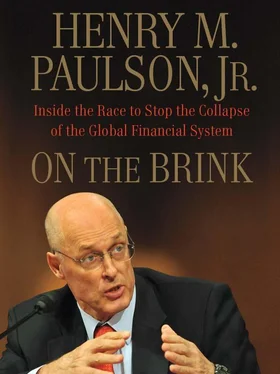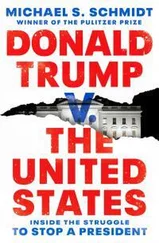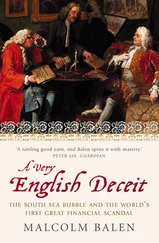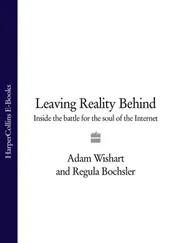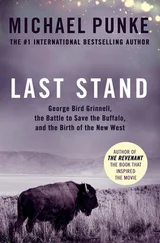My number one concern was the likelihood of a financial crisis. The markets rarely went many years without a severe disruption, and credit had been so easy for so long that people were not braced for a systemic shock. We had not had a major financial blowup since 1998.
We arrived at Camp David late Thursday morning, August 17, ate lunch, and spent the afternoon hiking. That evening, Wendy, ever the athlete, defeated all comers, including me, in the bowling tournament. Though the retreat is well known for the foreign dignitaries who have stayed there, the atmosphere is quite casual. On Josh Bolten’s recommendation I had even bought a pair of khaki pants—at the time, I just had dress slacks and jeans.
In the morning, I went for a brisk run, accompanied by the loud singing of Carolina wrens and, high up in the canopy, migrating warblers. I came across Wendy and First Lady Laura Bush, trailed by a Secret Service detail, heading off to do their birding. I was on my way to see a more exotic species of Washington animal.
After breakfast, the president’s economic team gathered in a large wood-paneled conference room in Laurel, as the main lodge is known (all of Camp David’s buildings are named for trees). Ed Lazear, chairman of the Council of Economic Advisers, led off with a discussion of wages and later talked about pro-growth tax initiatives. Rob Portman, the former congressman then serving as the head of the Office of Management and Budget, dissected budget matters, while Al Hubbard, then director of the National Economic Council, and his deputy director, Keith Hennessey, took us through entitlement issues.
The president’s operating style was on full display. He kept the atmosphere shirt-sleeve informal but brisk and businesslike, moving purposefully through the agenda with a minimum of small talk. Some people have claimed that as president, George W. Bush lacked curiosity and discouraged dissent. Nothing could be further from my experience. He encouraged debate and discussion and picked up on the issues quickly. He asked questions and didn’t let explanations pass if they weren’t clear.
I focused on crisis prevention. I explained that we needed to be prepared to deal with everything from terror attacks and natural disasters to oil price shocks, the collapse of a major bank, or a sharp drop in the value of the dollar.
“If you look at recent history, there is a disturbance in the capital markets every four to eight years,” I said, ticking off the savings and loan crisis in the late ’80s and early ’90s, the bond market blowup of 1994, and the crisis that began in Asia in 1997 and continued with Russia’s default on its debt in 1998. I was convinced we were due for another disruption.
I detailed the big increase in the size of unregulated pools of capital such as hedge funds and private-equity funds, as well as the exponential growth of unregulated over-the-counter (OTC) derivatives like credit default swaps (CDS).
“All of this,” I concluded, “has allowed an enormous amount of leverage—and risk—to creep into the financial system.”
“How did this happen?” the president asked.
It was a humbling question for someone from the financial sector to be asked—after all, we were the ones responsible. I was also keenly aware of the president’s heart-of-the-country disdain for Wall Street and its perceived arrogance and excesses. But it was evident that the administration had not focused on these areas before, so I gave a quick primer on hedging; how and why it was done.
“Airlines,” I explained, “might want to hedge against rising fuel costs by buying futures to lock in today’s prices for future needs. Or an exporter like Mexico might agree to sell oil in the future at today’s levels if it thinks the price is going down.”
I explained how on Wall Street, if you had a big inventory of bonds, you could hedge yourself by buying credit derivatives, which were relatively new instruments designed to pay out should the bonds they insured default or be downgraded by a rating agency. My explanation involved considerable and complex detail, and the president listened carefully. He might not have had my technical knowledge of finance, but he had a Harvard MBA and a good natural feel for markets.
“How much of this activity is just speculation?” he wanted to know.
It was a good question, and one I had been asking myself. Credit derivatives, credit default swaps in particular, had increasingly alarmed me over the past couple of years. The basic concept was sound and useful. But the devil was in the details—and the details were murky. No one knew how much insurance was written on any credit in this private, over-the-counter market. Settling trades had become a worrying mess: in some cases, backlogs ran to months.
Tim Geithner, president of the Federal Reserve Bank of New York, shared my concern and had pressed Wall Street firms hard to clean up their act while I was at Goldman. I had loaned him Gerry Corrigan, a Goldman managing director and risk expert who had been a no-nonsense predecessor of Tim’s at the New York Fed. Gerry led a study, released in 2005, calling for major changes in back-office processes, among other things. Progress had been made, but the lack of transparency of these CDS contracts, coupled with their startling growth rate, unnerved me.
“We can’t predict when the next crisis will come,” I said. “But we need to be prepared.”
In response to a question of the president’s, I said it was impossible to know what might trigger a big disruption. Using the analogy of a forest fire, I said it mattered less how the blaze started than it did to be prepared to contain it—and then put it out.
I was right to be on my guard, but I misread the cause, and the scale, of the coming disaster. Notably absent from my presentation was any mention of problems in housing or mortgages.
I left the mountain retreat confident that I would have a good relationship with my new boss. Wendy shared my conviction, despite her initial reservations about my accepting the job. I later learned that the president had also been apprehensive about how Wendy and I would fit in, given her fund-raising for Hillary Clinton, my ties to Wall Street, and our fervent support of environmental causes. He, too, came away encouraged and increasingly comfortable with us. In fact, we would be among the few non-family members invited to join the president and First Lady for the last weekend they spent at Camp David, in January 2009.
My first months were busy and productive. Treasury would no longer take a back seat in administration policy making, waiting for the White House to tell it what to do. Shaping my senior team, I kept Bob Kimmitt as deputy but changed his role. Typically, deputy secretaries run the day-to-day operations of Cabinet departments, but as a longtime CEO, I intended to do that myself. I’d use Bob, who knew Washington cold and had wide experience in diplomacy and foreign affairs, to complement me in those areas. Bob would bring us expertise, sound advice, and a steady hand as the crisis came on. I was also fortunate to inherit a talented undersecretary for terrorism and financial intelligence, Stuart Levey, with whom I worked to cut Iran off from the global financial system.
The first outside addition to my team was Jim Wilkinson, former senior adviser to Secretary of State Condoleezza Rice and a brilliant outside-the-box thinker, as my chief of staff. Then I recruited Bob Steel as undersecretary for domestic finance; a longtime colleague and friend, he had been a vice chairman of Goldman Sachs and left in early 2004, after a 28-year career. It was an absolutely critical appointment given my forebodings and his intimate knowledge of capital markets.
There was plenty to do. Treasury needed desperately to be modernized. Its technology infrastructure was woefully antiquated. For one critical computer system, we depended on a 1970s mainframe. In another instance, an extraordinary civil servant named Fred Adams had been calculating the interest rates on trillions of dollars in Treasury debt by hand nearly every day for 30 years, including holidays. And he was ready to retire!
Читать дальше
